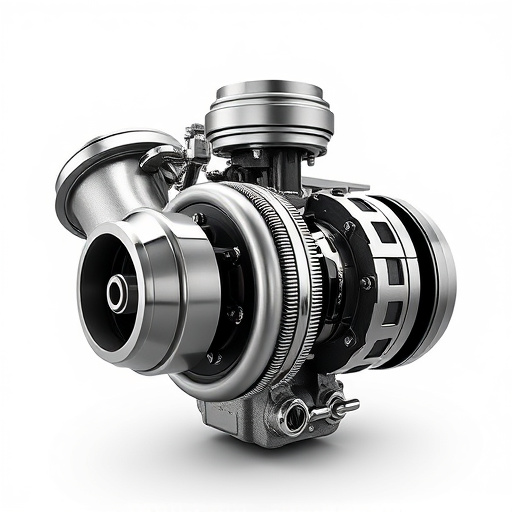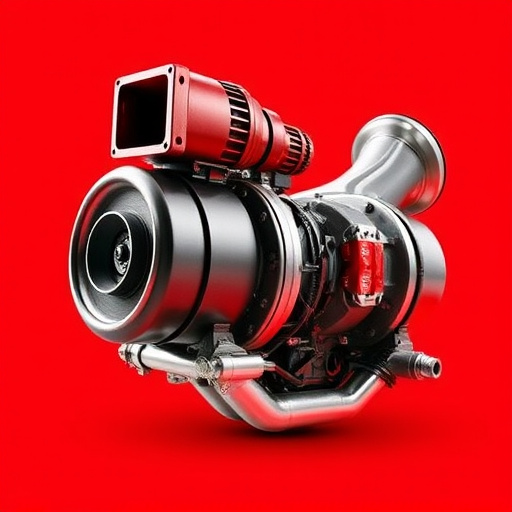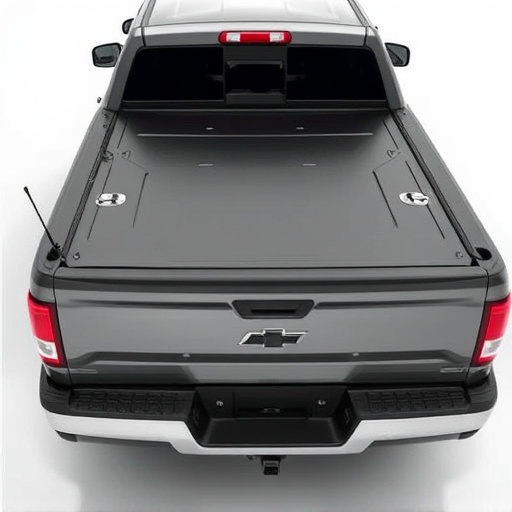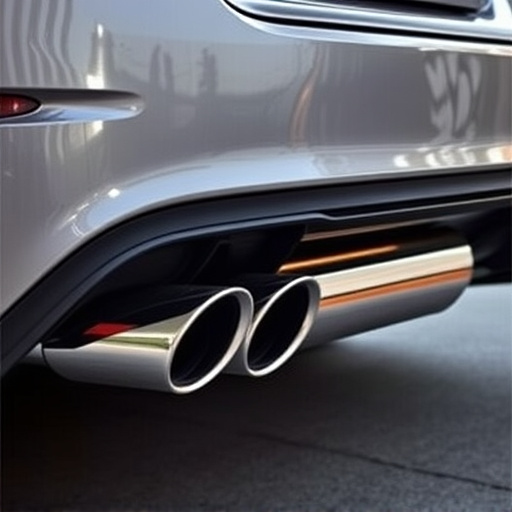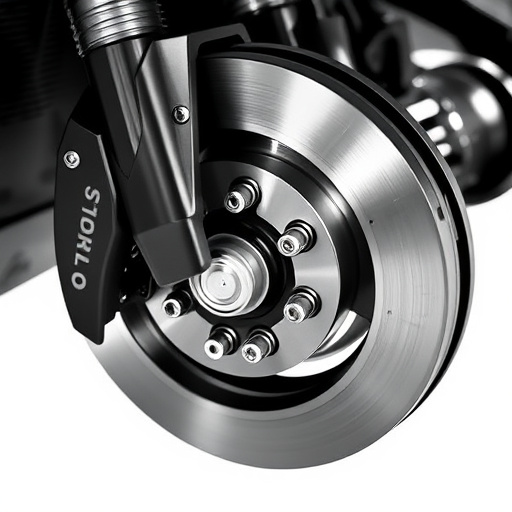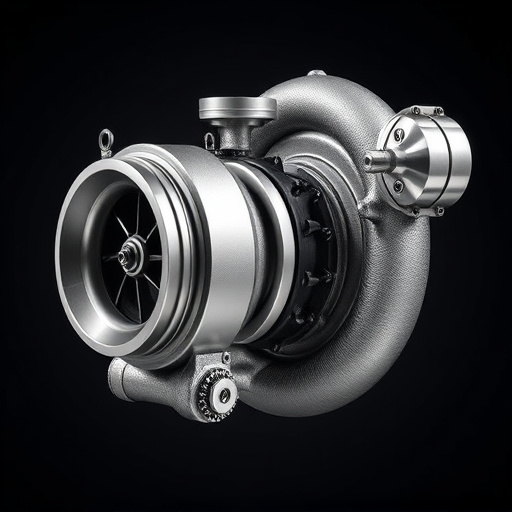The brake master cylinder is a crucial component that generates pressure for your vehicle's braking system. Common issues include leaks from worn seals or damaged lines, leading to reduced brake fluid levels and performance. Failure can cause soft pedals and diminished braking force. Regular inspection, maintenance, and timely replacement are vital for safety and optimal performance, especially with upgrades like high-flow exhaust and top-tier air filters. Before service, ensure you have the right tools, safety gear, and vehicle parts. Replacing the brake master cylinder involves locating it, inspecting related components, preparing your workspace, lowering the vehicle, disconnecting and bleeding lines, replacing the cylinder, and testing brakes before driving.
Ensure your vehicle’s safety and smooth braking with this comprehensive guide to preparing for brake master cylinder service. The brake master cylinder is a vital component, responsible for generating pressure to activate brakes. Over time, it can develop issues like leakages or failure, necessitating replacement. This article equips you with the knowledge to understand common problems, gather essential tools and safety measures, and follow a step-by-step process for successful brake master cylinder replacement.
- Understanding the Brake Master Cylinder: Its Role and Common Issues
- Preparing for Service: Gather Tools and Safety Measures
- Step-by-Step Guide to Replacing Your Brake Master Cylinder
Understanding the Brake Master Cylinder: Its Role and Common Issues
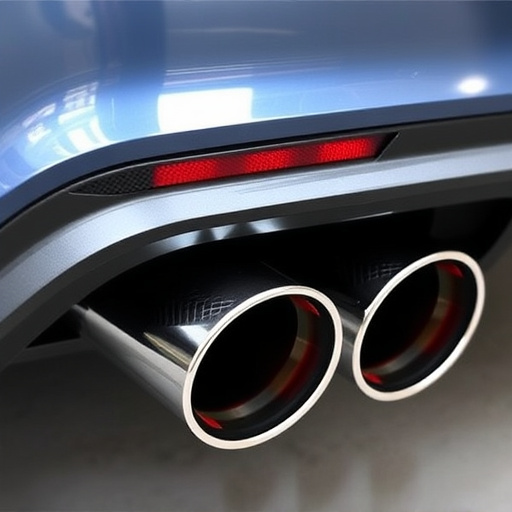
The brake master cylinder is a critical component of your vehicle’s braking system, responsible for generating the pressure that activates the brakes. It acts as the heart of the braking mechanism, ensuring smooth and efficient stopping power. Understanding its function is essential when preparing for service.
Common issues with the brake master cylinder include leaks, which can be caused by worn-out seals or damaged lines. This problem leads to reduced brake fluid levels and diminished braking performance. Another concern is a failing cylinder itself, often resulting from prolonged use or improper maintenance. Symptoms may include soft or spongy brake pedals, increased pedal travel distance, and reduced braking force. Regularly inspecting and maintaining this component through replacement if necessary, is vital for optimal vehicle safety and performance, especially when paired with upgrades like high-flow exhaust mufflers and top-tier performance air filters.
Preparing for Service: Gather Tools and Safety Measures
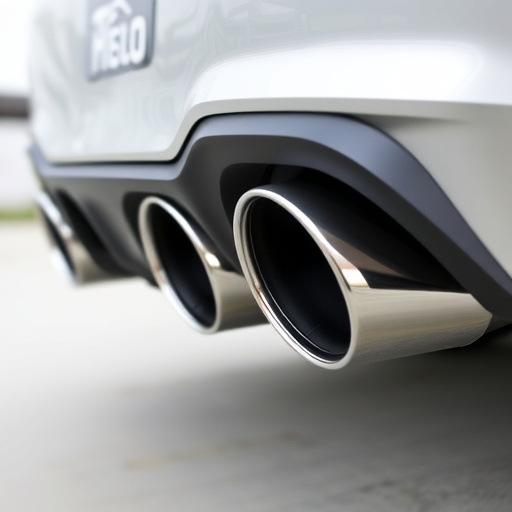
Before diving into brake master cylinder service, ensure you have the necessary tools and safety equipment on hand. This includes a jack, jack stands, new brake fluid (dot 3 or dot 4), and possibly replacement seals or gaskets specific to your vehicle’s make and model. It’s crucial to wear protective gear like gloves and safety glasses to prevent any accidents during the process.
Additionally, consider having other essential components like brake pads and performance exhaust parts readily available if you plan to simultaneously upgrade these elements for optimal braking performance. Having a well-stocked garage kit will not only streamline your service but also ensure your vehicle is equipped with top-tier safety features after the repairs are complete.
Step-by-Step Guide to Replacing Your Brake Master Cylinder
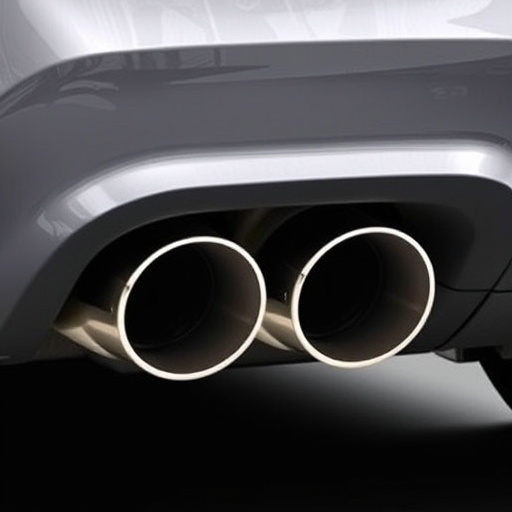
Replacing your brake master cylinder is a crucial task for maintaining your vehicle’s safety and performance. Here’s a step-by-step guide to help you through the process, ensuring a smooth and efficient procedure. Begin by locating the brake master cylinder, typically found near the wheel brakes in the engine compartment or under the vehicle. This component controls the braking power delivered to each wheel, so proper installation is critical.
Before replacing, inspect all related parts, including lines, calipers, and wheels, for any signs of damage or wear. If needed, consider upgrading with high-quality suspension kits or replacing worn exhaust mufflers and muffler tips for optimal performance. Prepare your workspace by ensuring adequate space and lighting, then gather the necessary tools: jack, jack stands, new brake master cylinder, wrenches, and a bleeder tool. Carefully lower your vehicle using the jack and secure it with stands. Disconnect the lines from the old cylinder, bleed any air from the system, and replace the cylinder, tightening all connections securely. Test the brakes gently to ensure smooth operation before taking your vehicle for a test drive.
In preparing your vehicle for brake master cylinder service, you’ve taken a proactive step towards ensuring safe and efficient braking. By understanding the cylinder’s vital role, gathering the necessary tools, and following a structured replacement guide, you’re well-equipped to address common issues. Regular maintenance of this critical component not only enhances driving safety but also extends the lifespan of your vehicle’s braking system.

